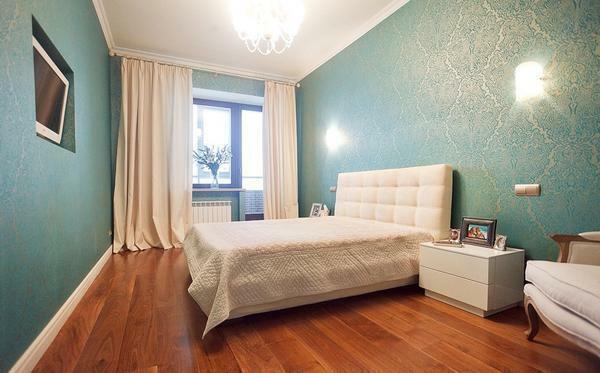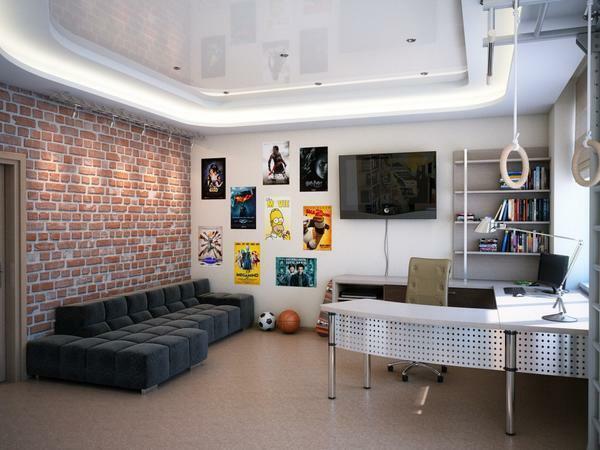Contents
- 1 Types of primers for walls
- 2 Priming of walls before plastering
- 3 Priming of walls before painting
- 4 Technology and tools for priming of walls
One of the most important elements of any repair and construction is the priming of walls. What is she like?

Waterproofing properties
Primer for walls, floors, ceilings and any other building element is designed to solve a huge pile of problems. The main one is the bonding of the base. It creates a strong film that can withstand heavy loads. This she manages due to the possibility of deep penetration. These properties are acrylic types of primers, designed for concrete, plastered and putty walls.
A chemically active formula starts to polymerize( solidify) when reacted with oxygen. In the application plane of the substance, long artificial crystals of the polymer grow, which form strong bonds between each other.
The second task that the primer should solve and successfully performs is waterproofing. Due to the formation of a dense film on the surface of the base, there is no room for moisture to penetrate deep into the wall. But it is a porous structure.

Low-quality preliminary preparation of walls
An important function of any primer for walls is anti-corrosion and antiseptic protection. When applied to metal surfaces, it ensures maximum adhesion of the finish coatings to the substrate, which ensures the material is resistant to damp environments. When using a primer for loose walls( brick, block ASG, plaster, putty), it performs the role of antiseptic. It kills all kinds of microorganisms that are even deep in the structure of the material and create anti-conditions for their future existence and appearance.
Types of primer for walls
Today different types of primer mixes are available for different types of wall base materials:
- for metal substrates;
- for bulk cement porous structures;
- for wood coatings.
There are also some types of primers available on the market, which are securely fastened even to plastic products, which then allows plastering, puttying or painting on them. They include compound and resinous components.

Types of primers for different signs
Priming walls for wallpaper, the last coating of which is basically putty, will become an integral process of repair work. It uses mixtures on acrylic basis. They have excellent penetrating abilities, which makes it possible to obtain a strong and reliable base. Especially for wallpaper and this is what you need. But for the treatment of walls of bulk materials, even wallpaper paste itself can be used. It has all the same properties as the acrylic primer, in addition, due to its rather thick consistency, the resulting mixture can also become a means for leveling microcracks, micropores and other minor surface defects.
When preparing homemade primer for walls, to achieve maximum quality in texture. To ensure that there are no hardened clots and specks on a perfectly flat wall, when stirring the glue, a piece of fiberglass mesh is inserted into the container. It adheres to all undissolved pieces of glue and debris, which in the future will allow you to freely immerse the roller in a container.
If the walls are made of wood, which then need to glue the wallpaper, then alkyd primers are used. They have a characteristic pungent odor, so the room should be well ventilated. The primer under the plaster with this material creates a strong coating, because it penetrates deeply into the structure of the wood, securing it and preventing drying out. In addition, it is also a good remedy against various parasites.
Also available is a primer concentrate for walls, ceilings and floors from loose surfaces and wood. This highly concentrated substance, called acrylic dispersion, is diluted with water in various proportions before use. The proportions of the components depend on the forthcoming work.

For example, the primer concentrate Armor is mixed with water in the following proportions:
for facade works - 1: 0,6;
for universal work - 1: 0,8;
for interior decoration - 1: 1.
Dilution ratios with water and consumption per 1 m2 of area are indicated on the packaging, therefore, before using any concentrate, you should thoroughly read the instructions.
Priming of walls before plastering

Priming of walls with plaster for plastering
Primer for plaster plays the most important role in the entire construction or repair process. When performing walls from blocks of ASG, brick or concrete, fine particles of the same material are always present on its surface. They will be an obstacle to a lasting contact of the plastering solution of the walls and even a strong adhesive composition for the tiles. The primer for plastering the walls will solve the problem of the formation of chalk dust on the surface of these materials, firmly attaching them to the basic structure. Many people mistakenly believe that the wall is easy to moisten with water, and the solution will hold perfectly. But this is not so, because even after a short period of time, the lag of the plaster from the blocks or bricks will be clearly visible on the wall cut, and this can negate all the work done. Therefore, in order to avoid these troubles and subsequent unforeseen expenses, this important step should be taken. It is absolutely necessary to wait for the complete drying time of the treatment before the subsequent work. With a friable and suspicious surface, the primer for the plastering of the walls must be carried out several times, allowing the previous layer to dry completely.

Priming the walls with a brush in hard-to-reach places
The drying time and concentration of dilution of the primers are always indicated on the packages, so be sure to read the instructions before using it. The average polymerization time after treatment is 24 hours at normal humidity and at least 150 ° C.
Wall priming before painting

Priming walls for painting
Today, there are many ways to finish the walls, which are then painted with different types of paints. But for its strong adhesion to the surface, it is also necessary to primer the walls for painting. Depending on the type of finish coating, the type or number of primer layers is selected. For water-based facade paints, one layer of soil is sufficient, but when using oil or other types of coatings, it is better to process in several layers.
Technology and tools for priming the walls
Having chosen the type of material, now we will figure out how to primed the walls for painting.
For the work on the priming of the walls you will need a roller, brush and a container for the ground.
Many types of soils, even almost all, begin to grasp instantly. Therefore, personal protective equipment will also be mandatory. These are rubber gloves, a hat and appropriate clothing.
Brush is recommended to use for high-quality processing of places in which the roller can not penetrate, even with a long pile:
- corners;
- cavities;
- openings;
- protrusions;
- decor elements.
In this case, the pile brushes can be any non-rigid, so as not to damage the base( putty).The roller should be used foam rubber, velor or pile.
When applying a primer, it is important to remember that when the surface is strongly soaked, the base can be damaged. In particular, this applies to putty. Therefore, the process of applying soil to the surface is best carried out in one movement in one place.
Below is a short video that discusses the basic principles of priming walls.


